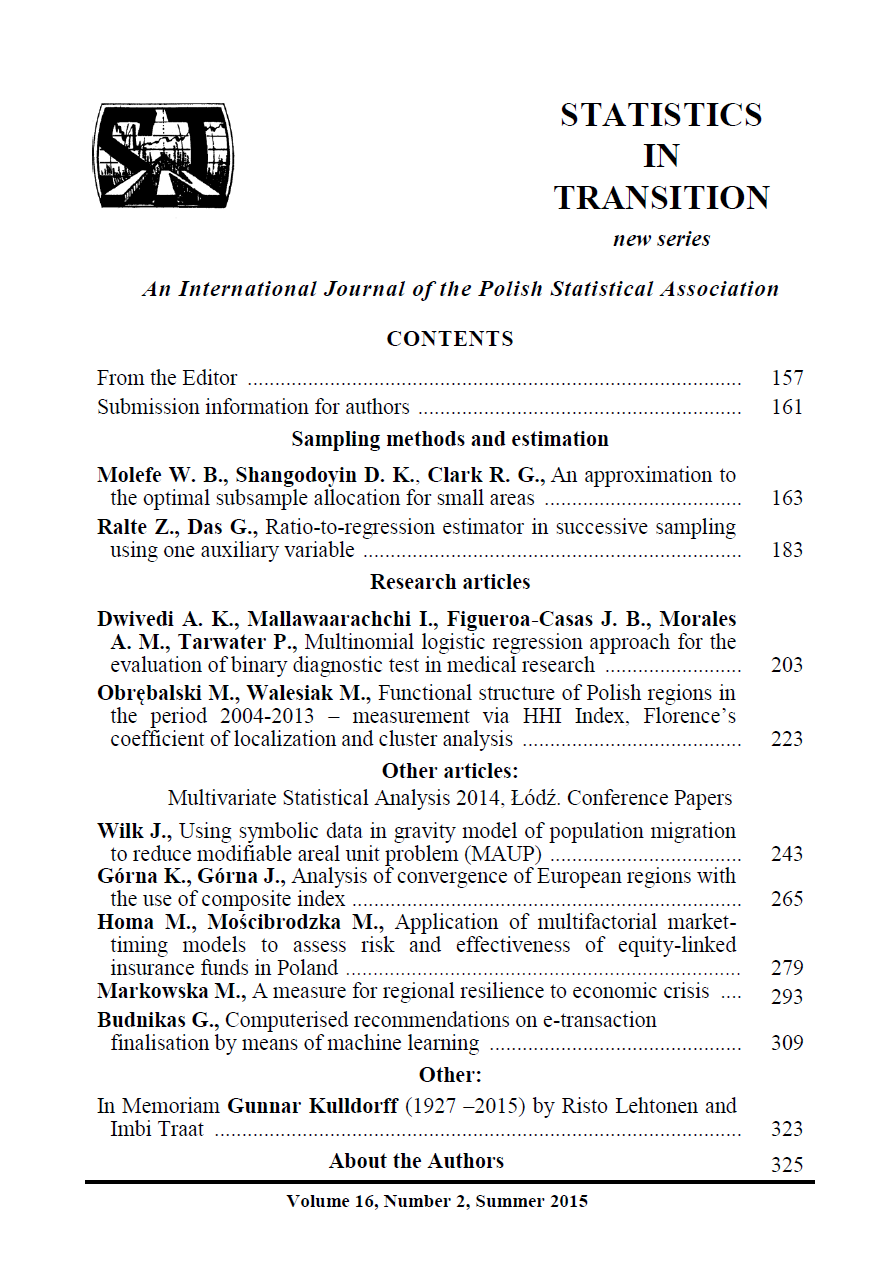ARTICLE
ABSTRACT
This paper develops allocation methods for stratified sample surveys in which small area estimation is a priority. We assume stratified sampling with small areas as the strata. Similar to Longford (2006), we seek efficient allocation that minimizes a linear combination of the mean squared errors of composite small area estimators and of an estimator of the overall mean. Unlike Longford, we define mean-squared error in a model-assisted framework, allowing a more natural interpretation of results using an intra-class correlation parameter. This allocation has an analytical form for a special case, and has the unappealing property that some strata may be allocated no sample. We derive a Taylor approximation to the stratum sample sizes for small area estimation using composite estimation giving priority to both small area and national estimation.
KEYWORDS
composite estimation, mean squared error, sample design, small area estimation, sample size allocation, Taylor approximation.
REFERENCES
BANKIER, M. D., (1988). Power Allocations: Determining Sample Sizes for Sub-national Areas. The American Statistician, 42(3):174-177.
BINMORE, K. G., (1982). Mathematical Analysis: A straightforward approach. Cambridge University Press, 2nd edition.
BROCK, D. B., FRENCH, D. K., PEYTON, B. W., (1980). Small Area Estimation: Empirical Evaluation of Several Estimators for Primary Sampling Units. In Proceedings of the Section on Survey Research Methods, American Statistical Association, pp. 766-771.
DEMIDOVICH, B., editor, (1964). Problems in Mathematical Analysis. MIR Publishers.
ERICKSEN, E. P., (1973). Recent Developments in Estimation for Local Areas. In Proceedings of the Section on Social Statistics, American Statistical Association, pp. 37-41.
FULLER, W. A., (1999). Environmental Surveys Over Time. Journal of Agricultural, Biological and Environmental Statistics, 4: 331-345.
GONZALEZ, M. E., (1973). Use and Evaluation of Synthetic Estimates. In Proceedings of the Section on Social Statistics, American Statistical Association, pp. 33-36.
HIDIROGLOU, M. A., PATAK, Z., (2004). Domain estimation using linear regression. Survey Methodology, 30: 67-78.
LONGFORD, N. T. (2006). Sample Size Calculation for Small-Area Estimation. Survey Methodology, 32(1): 87-96.
MOLEFE, W. B., (2012). Sample Design for Small Area Estimation. PhD thesis, University of Wollongong, http://ro.uow.edu.au/theses/3495.
MOLEFE, W. B., CLARK, R. G., (2015). Model-Assisted Optimal Allocation For Planned Domains Using Composite Estimation, Survey Methodology (forthcoming).
RAO, J. N. K., (2003). Small Area Estimation. Wiley.
ROYALL, R. M., (1973). Discussion of two Papers on Recent Developments in Estimation of Local Areas. In Proceedings of the Section on Survey Research Methods, American, Statistical Association, pp. 43-44.
S?RNDAL, C., SWENSSON, B., WRETMAN, J., (1992). Model Assisted Survey Sampling. Springer-Verlag.
SCHAIBLE, W. L., (1978). Choosing Weight for Composite Estimators for Small Area Statistics. In Proceedings of the Section on Survey Research Methods, American Statistical 3 Association, pp. 741-746.
SINGH, M. P., GAMBINO, J., MANTEL, H. J., (1994). Issues and Strategies for Small Area Data. Survey Methodology, 20(1): 3-22
